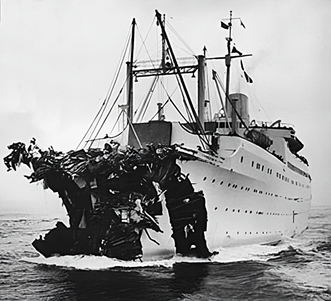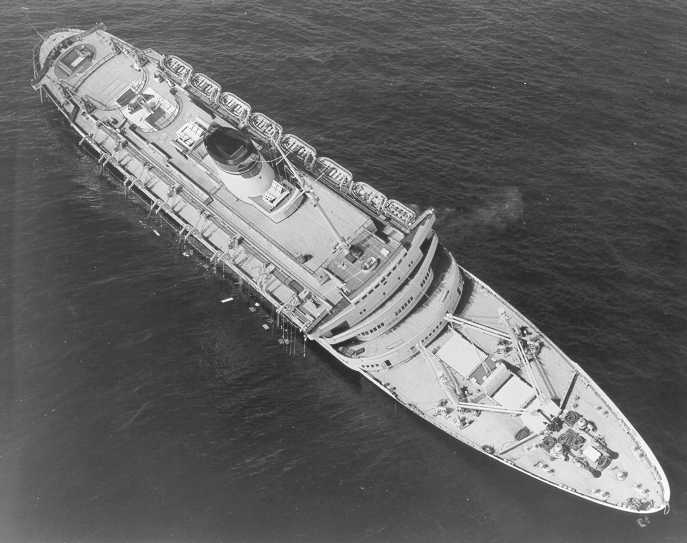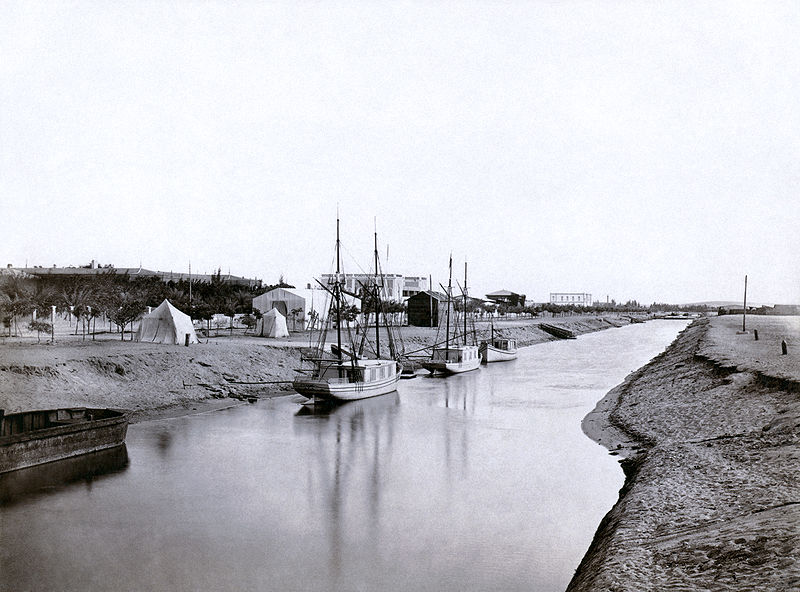This Week in Maritime History, July 25 to 31

July 25, 1956
SS Andrea Doria Sinks after Collision
The SS Andrea Doria was an Italian ocean liner post-WWII and was, at the time, Italy’s largest, fastest and safest ship.
On July 25, 1956, only three years into the Doria’s time on the sea, the Italian liner collided with a Swedish ship, the MS Stockholm, while approaching the coast of Nantucket, Massachusetts en route to New York City. The Andrea Doria was struck on its side, and immediately started to list heavily to starboard, decimating the amount of usable life boats. The ship was able to stay afloat in the ocean for 11 hours after the collision, as well as receiving rapid responses from other ships allowing 1,660 passengers and crew to be rescued from the wreckage. The efficiency of the ship’s design, however, could not save 46 individuals who died that day from a result of the collision.


Top, MS Stockholm after the collision; Bottom, Andrea Doria slowly sinking after the collision
The Andrea Doria capsized and sank the morning after the accident and the incident became one of the most infamous maritime disasters in history, as it was the last well-known transatlantic passenger ship to sink before aviation dominated transatlantic travel.
***
July 26, 1956
Egypt Nationalizes the Suez Canal
July 26, 1956 marks the day of the advent of the Suez Crisis when Egyptian President Nasser nationalized the French and British owned Suez Canal. The canal was a very important oil trade route from the Middle East and remained under control of the two powers. Post-WWII, Egyptian leaders pressed for the British troops to evacuate the zone of the Suez and enacted a nationalizing, hoping to install tolls for the popular shipping route to help finance a damn on the Nile River. Following the nationalization, Israeli , British and French troops invaded the area to try and occupy the canal zone from the Egyptians.
Pressures from the Soviets, the US, and the UN, however, caused British and French forces to withdraw the following year, and the Suez Canal became the front line between the Egyptian and Israeli armies causing a flurry of unrest between the two countries for years to come, including the Six Day War.

The Suez Canal
***
July 30, 1945
USS Indianapolis is Torpedoed by a Japanese Submarine
The USS Indianapolis was a Portland-class cruiser housed by the United States Navy at Pearl Harbor since the 1930’s. On July 30, 1945, the USS Indianapolis went down in the books as the single greatest loss of life at sea in the history of the US Navy. The Indianapolis had just delivered parts for the first atomic bomb when the vessel was torpedoed by an Imperial Japanese Navy submarine halfway in between Guam and Leyte Gulf. The ship sank within 12 minutes of being hit into shark infested waters, and approximately 300 men went down with the Indianapolis, while 800 faced radiation exposure, shark attacks and dehydration.
The Navy didn’t learn of the sinking until four days later when survivors were spotted floating in the water, having almost no food or water. Of 1,196 crew members aboard the ship, only 316 survived.

Indianapolis at Pearl Harbor in 1937

that matters most
Get the latest maritime news delivered to your inbox daily.
The USS Indianapolis was the last major US Navy ship to be sunk by enemy forces in WWII.
***
